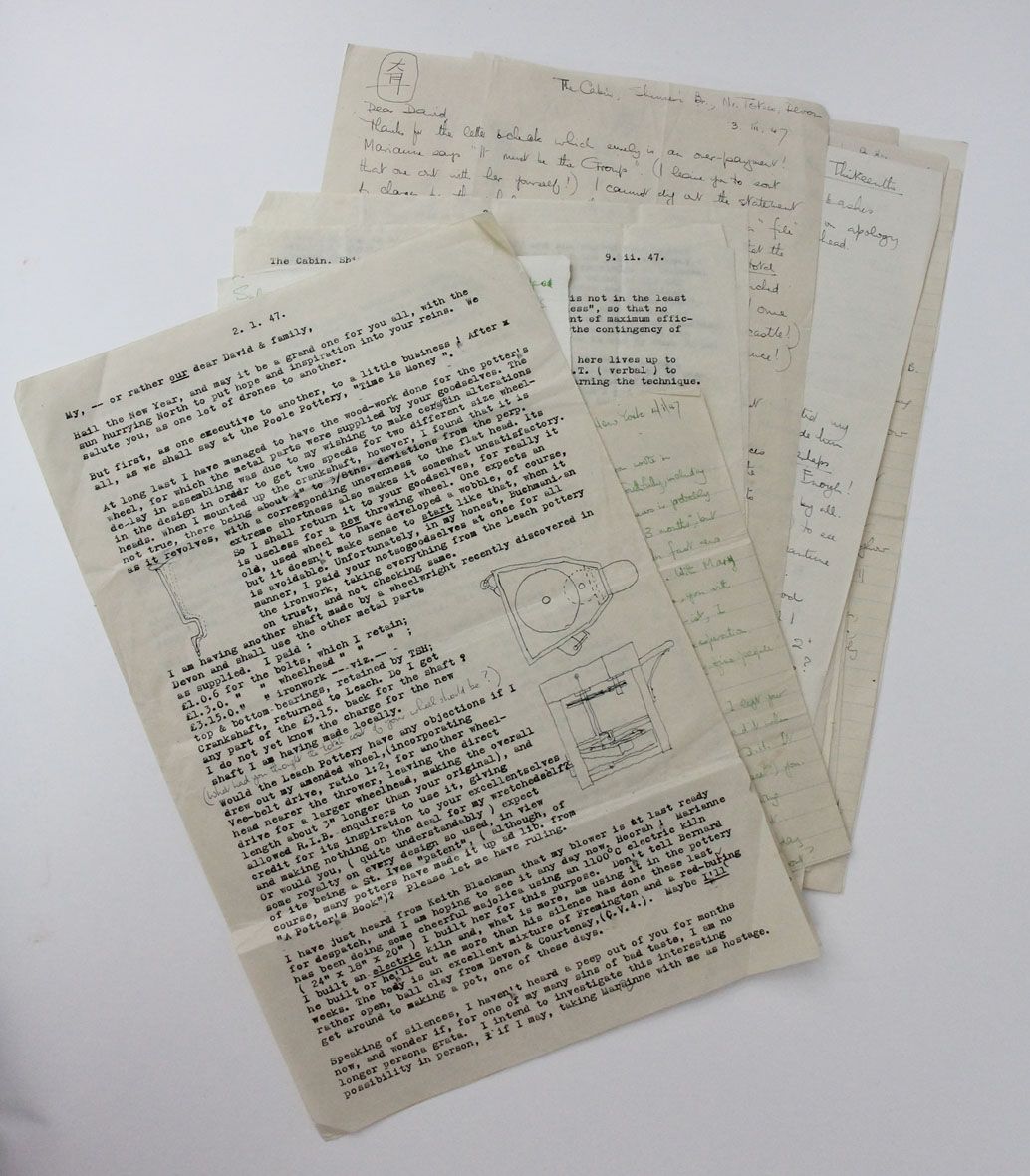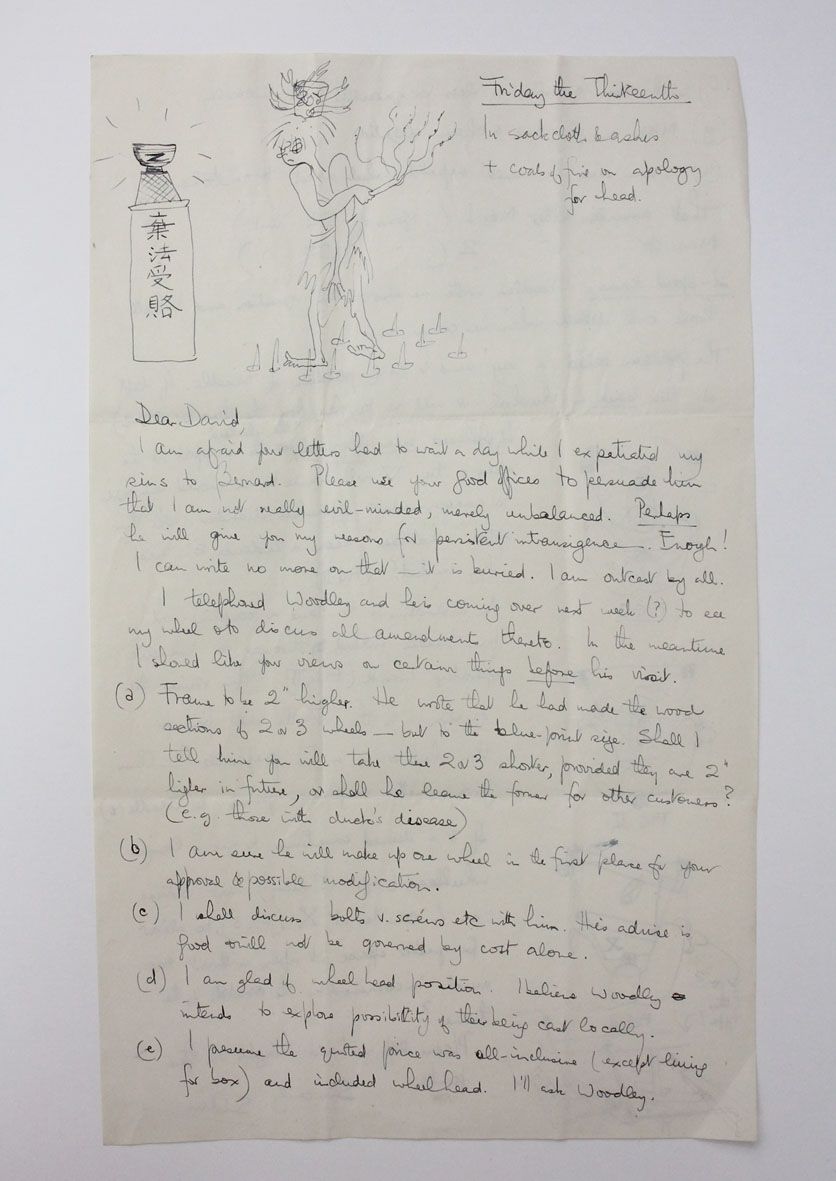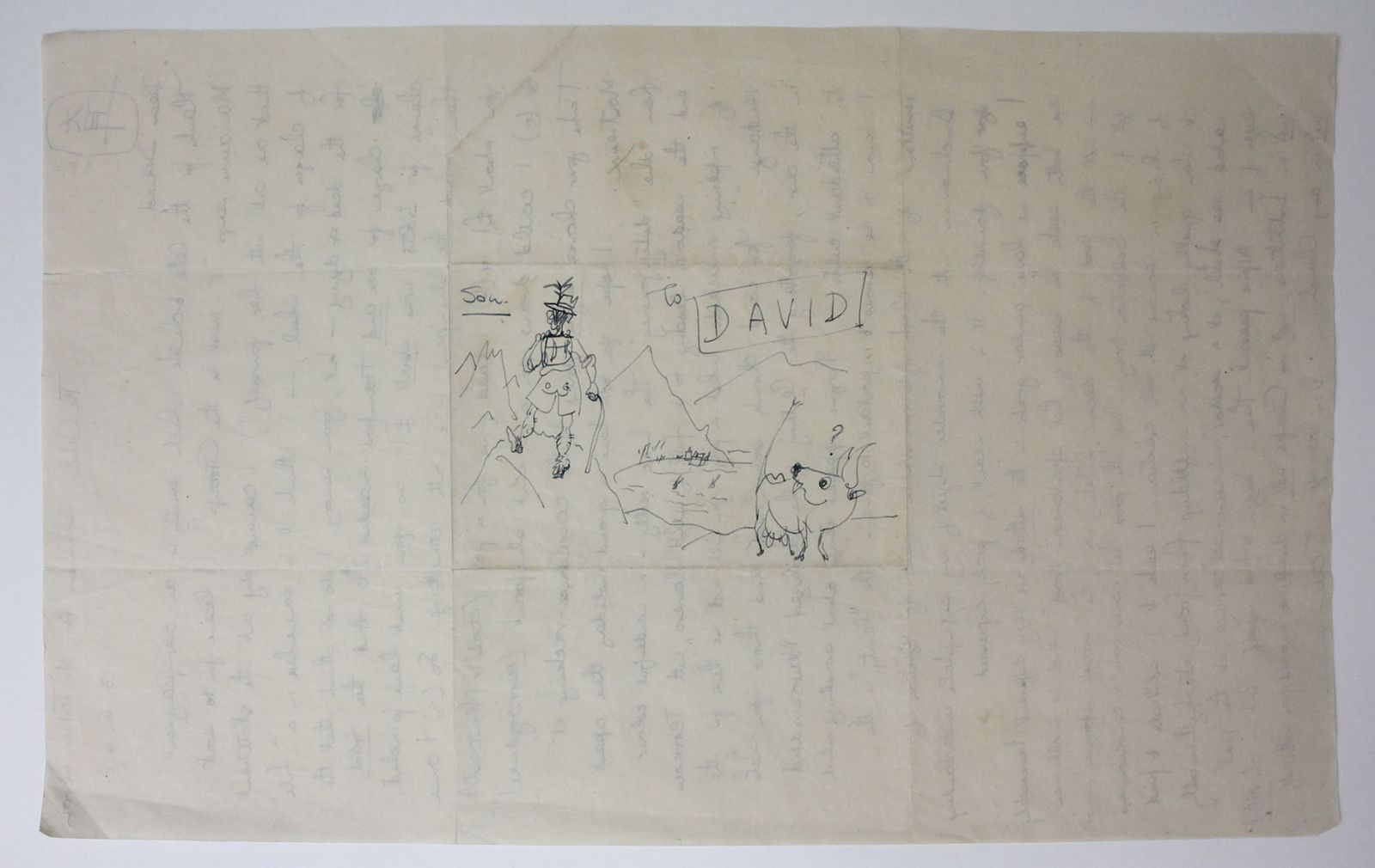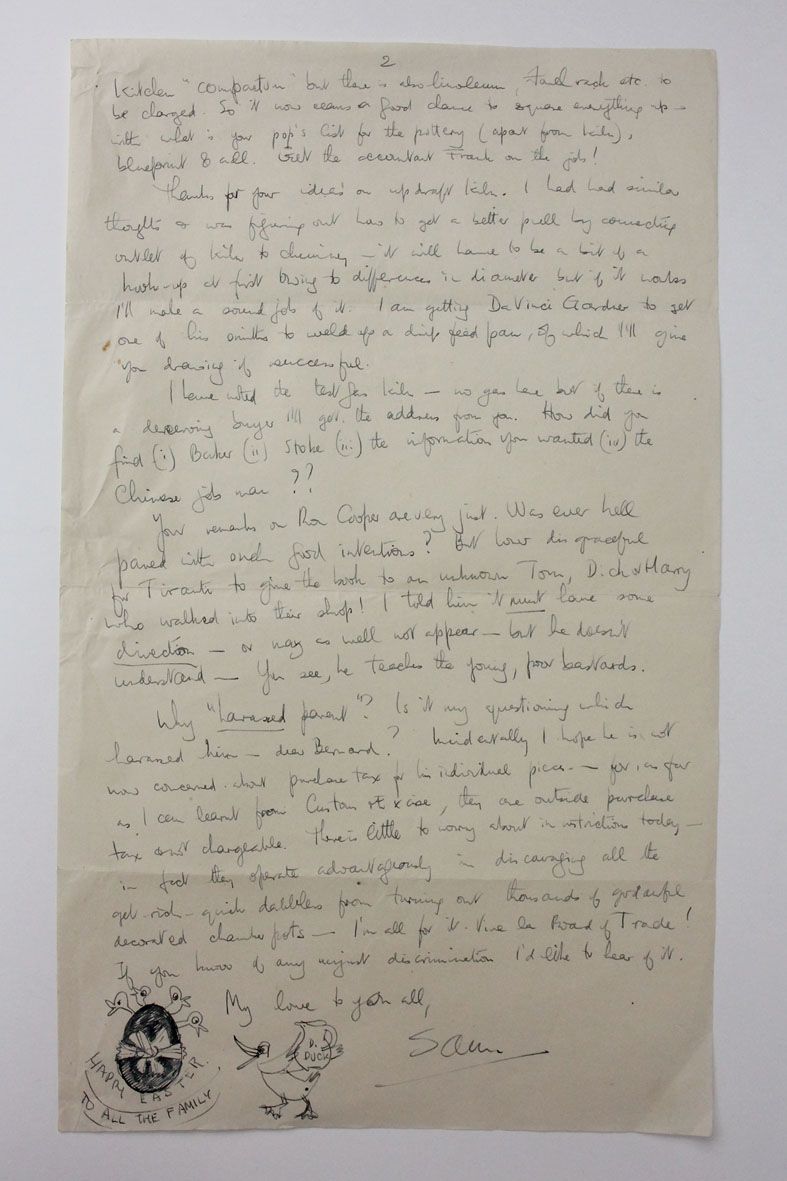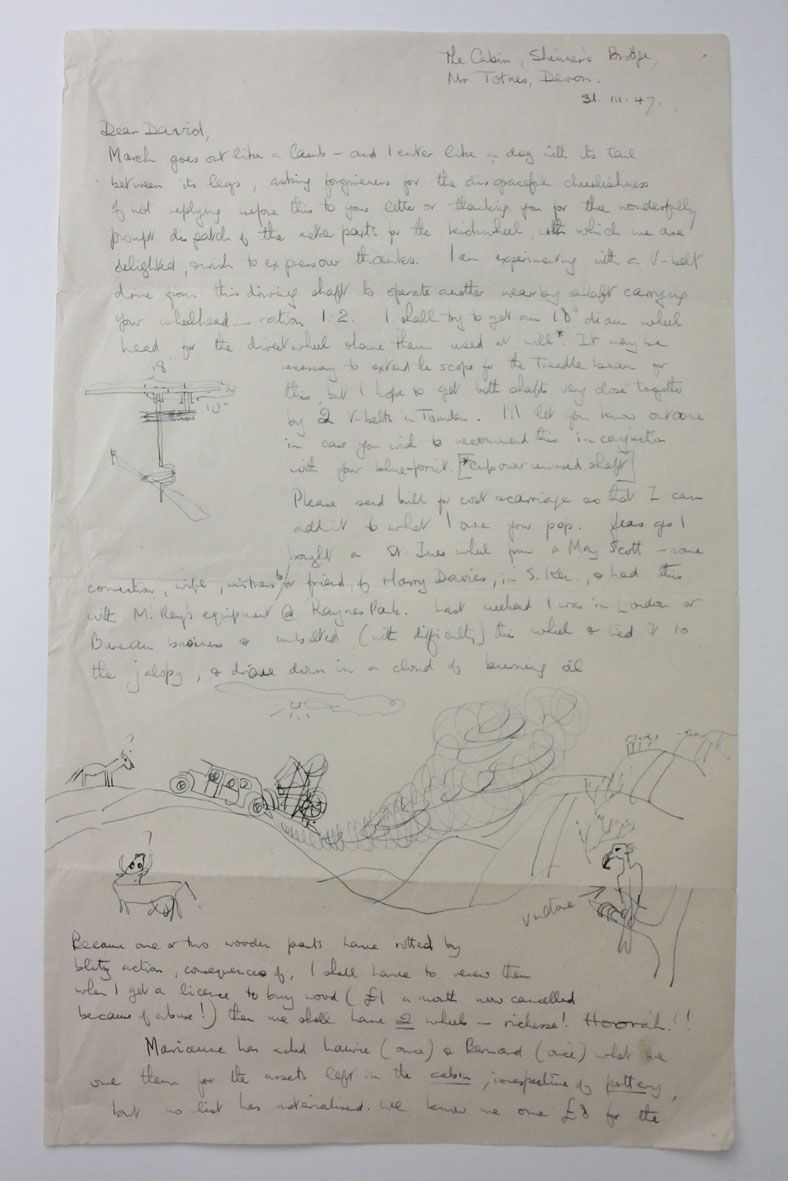AN ARCHIVE OF AUTOGRAPH, TYPED AND ILLUSTRATED LETTERS BETWEEN DAVID LEACH AND SAM HAILE
A collection of letters from the artist and potter Sam Haile to the potter David Leach, spanning the period January 1947 to January 1948. Twelve letters, across thirty sides of paper of varying size. Six letters are written in ink and five are typed with manuscript additions, four also contain hand drawn illustrations and diagrams. Condition is good, all have old folds and a few have the odd nick or mark, one sheet has some loss to the sides which affects the text, but without loosing meaning. Otherwise the group remains very well preserved.
Sam Haile (1909-1948) studied at the Clapham School of Art and then at the Royal College of Art (1931-4) under William Staite Murray. Although an accomplished painter, winning his scholarship to the RCA on this basis, Haile is primarily remembered as a potter, producing some of the most inventive work of the period. From 1936 he taught at Hammersmith and Kingston art schools and shared a studio in Raynes Park with Margaret Rey. Here he produced slipware and stoneware and held his first solo exhibition in 1937. In 1938 he married Marianne de Trey, another influential pioneer of the British craft ceramics revival. Haile, who had joined the British surrealist group in 1937, introduced de Trey to a world of revolutionary art, literature, music and politics. In 1939 the pair moved to America where Haile taught at various institutions. Eventually drafted into the army, he returned to Britain in 1944, followed by de Trey in 1945. After the war they established a pottery at the Bulmer Brickyard, near Sudbury, Suffolk. In need of more space, they then took over Bernard Leach's Shinners Bridge Pottery in Dartington, Devon in 1947, moving into Leach's old wooden bungalow, where he had recently written his seminal text A Potter's Book. After just one year, however, Haile was tragically killed in a car accident, leaving de Trey alone and pregnant with their daughter. Regardless, de Trey, with the help of her sisters, went on to make the pottery a highly successful enterprise and an important centre of ceramic innovation. This collection dates from the period at Shinners Bridge, shortly before Haile's death and documents Haile and de Trey's relationship with the Leach family. Frank and humorous, the letters are imbued with an acerbic wit and sometimes decorated with amusing drawings. They discuss the ideals motivating both Haile's and Leach's respective work, their methods and designs for kilns and potter's wheels, including diagrams. They also shine an intimate light on their personal lives, thoughts, opinions and concerns. As well as his wife de Trey, Haile frequently talks of his relationship with Bernard Leach, in addition to numerous other contemporary potters, including Harry Davis, Bernard Forrester, Helen Pincombe, and Henry Hammond. His commentary on Bernard often reveals good-humoured disagreement, serving to reflect the challenge posed to Leach's more traditional approach by the ideas of the subsequent generation of potters - 'Don't tell Bernard I built an electric kiln and, what is more, am using it in the pottery he built or he'll cut me more than his silence has done these last weeks'. He notably remarks on the relationship between David Leach and his father, assuring David that 'of course all distinguished fathers have an inhibiting effect on their sons...Accept the influence and the fine mentor-ship of Bernard, as El Greco did of Tintoretto'. Haile also casts a critical eye over the activities of his fellow artists. Of Patrick Heron's art criticism, for example, he writes: 'To have Heron judging Picasso seems to me a trifle bombastic, but he seems to think it justified by his insight'. Haile's ceramics, of course, had incorporated symbolic figures and dream characters more than ten years before Picasso had begun producing his own. Leach and Haile's interest in China and Japan is also frequently reflected, as is Haile's radicalism, typically asserting: 'I want to get my contemporary potters together - hold shows together and make them ignore "safety" in life and art'. As a group, these letters form an important archive of the last year of the life of an innovative, pioneering, charismatic ceramicist and provide a fantastic record of the relationships that shaped the development of studio ceramics in Britain in the post-war period.
Stock code: 16708
£2,800
Published:
Original Manuscript.
1947
Category
Non-fictionManuscripts
Art Books


